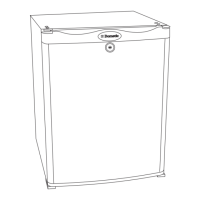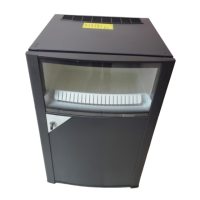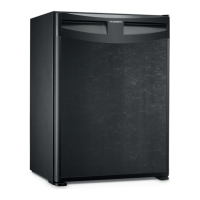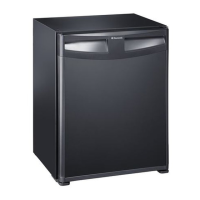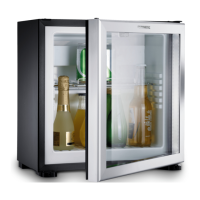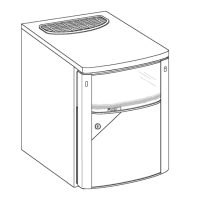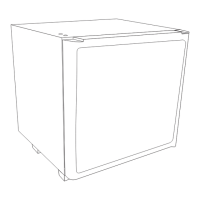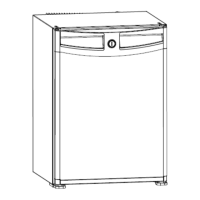Troubleshooting
Energy Saving Tips
At an average room temperature of approx. 22°C, it is sufficient to
operate the miniBar with an average thermostat setting.
If possible, always store pre-cooled goods.
Do not expose the miniBar to direct sunlight and do not place it close
to a source of heat.
An unobstructed air circulation in the fridge aggregate must be
ensured (ref. chapter 7.0 Installation).
When removing goods, only open the miniBar briefly.
Switch on the miniBar approx. 12 hours prior to stocking.
20
14.0
Failure : No cooling (the cooling unit at the back of the appliance is cold)
Possible Cause Fault Elimination (authorised service provider)
a.) Defective heating shell ?
b.) Defective Air and / or
Evaporator-Sensor?
c.) Defective electronic ?
d.) The appliance is in defrost
mode.
a.) Measure resistance, replace heating shell if
required.
230V / 65 W ~ 800W
230V / 80 W ~ 650W
110V / 65 W ~ 186W
110V / 80 W ~ 150W
b.) Pull sensor off electrics and check by means
of measurement.
Ambient Temperature (°C) Resistance (kOhm)
0° 32,51 +/-2%
10° 19,86 +/-2%
15° 15,68 +/-2%
20° 12,48 +/-2%
c.) Plug in and measure voltage applied at
heating shell output!
After a maximum of 15 seconds, the heating
shell will be driven by mains voltage.
d.) Pull out plug and put back in again.
Failure : No cooling (the cooling unit is warm)
a.) Is the appliance level?
b.) Has sufficient ventilation been
provided ?
c.) Running time to short ?
d.) Defective cooling unit ?
e.) Light permanently on when
door closed.
a.) Level the appliance using a spirit level.
b.) See section "Installation 7.0".
c.) Leave system running for a few hours.
d.) Replace cooling unit and - if required-
refrigerator.
e.) Replace lighting sensor. Install new door, if
required.
Possible Cause Fault Elimination (authorised service provider)
15.0
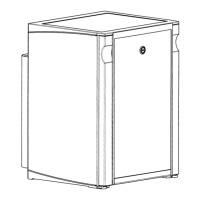
